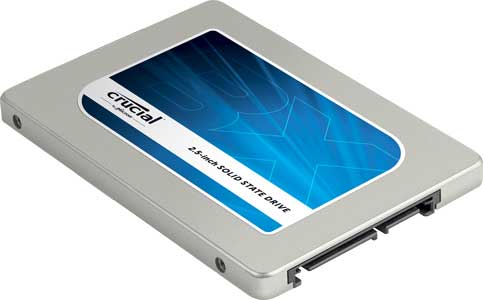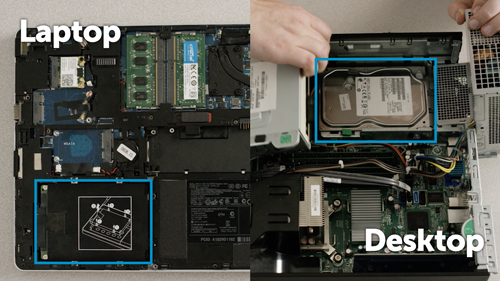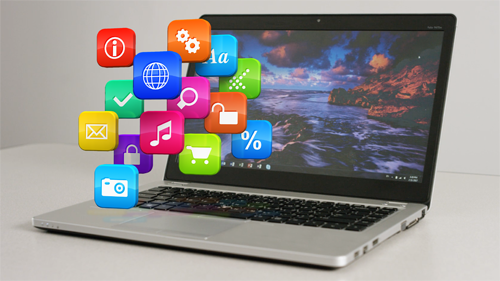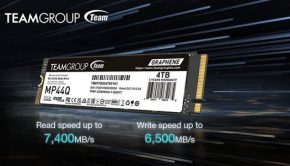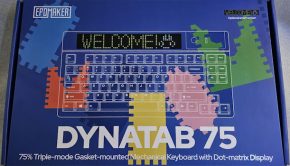Crucial reveals easy way to install an SSD into your PC
SYDNEY, 25 July 2017 – If you’re a first-time SSD installer, there’s no need to fear – Crucial have now published an easy four-part process – prepare, copy, install and download – which is not only straightforward but also ensures your PC will be radically faster when you’re done.
Part 1: Prepare
Step 1: Gather supplies
You’ll need your Crucial SSD, a screwdriver, your computer’s owner’s manual (which will specify the type of screwdriver you need), and a SATA-to-USB cable (sold separately).
Step 2: Set the spacer aside
In the box with your SSD is a spacer (it looks like a black bracket). Set it aside for now – it won’t come into play until later in the process, and based on your system, you may not even need it.
Step 3: Back up important files
Before starting the install process, save any important files on your computer to a USB flash drive or external storage drive.
Step 4: Go slowly and deliberately
The information you need is all here. Your system will likely look different than the ones shown, but the process is the same. Read each step thoroughly and consult our Helpful Tips for more info.
Did You Know…?
The longest part of the SSD install process is copying everything from your old drive to your new SSD. Before you start, get a sense of how long this’ll take by referring to our chart.
| Amount of data on old hard drive | Time it may take to copy to new SSD |
| Less than 256GB | 20-30 minutes |
| 256-512GB | 30-60 minutes |
| 512GB-1TB | 60-90 minutes |
| More than 1TB | 90+ minutes |
Part 2: Copy
Step 1: Connect the SSD to your system
Using a SATA-to-USB cable, attach one side to the SSD and the other end to your computer. When handling your SSD, try not to touch its gold connector pins with your fingers.
Step 2: Download the software that copies your old drive to your new SSD
This comes free with Crucial SSDs. On the computer the SSD is connected to, go to www.crucial.com/acronis to download the software.
Step 3: Install the software you downloaded
Open the file you downloaded and accept all of the prompts. A screen will then pop up. Click Install. Once installation is complete, start the application.
Step 4: Enter the software’s serial number
This is the 16-digit key noted on the software card inside the box of your SSD.
Step 5: Prepare to copy (clone) your data
You’ll now see several options in the software. Select the Clone Disk option. You’ll then be asked to select a clone mode. If you’ve never done this before, we recommend the Automatic method, then click the Next button.
Step 6: Select source and destination drives (disks)
Your “source” disk is your existing drive. Select it by clicking on it, then click Next. Now select your “destination” disk (your new SSD) and click Next. On the following screen, click Proceed to start copying your data.
Step 7: Reward yourself with a beverage of choice
It’ll take a while for everything to copy. Depending on your system, the software might make it shut down or restart, which is OK. Leave your computer for a bit and go do something fun!
Helpful Tip
If your old storage drive is 128GB (for example) and you copy its contents to a 275GB SSD, the SSD may show up in your system as a 128GB drive, even though it’s actually the size that you bought. No need to fear – you can still store more on it, but you’ll need to make some adjustments to the drive’s settings. This doesn’t usually happen, but if it does, we want to let you know that it’s OK and that it’s based on your system, not you.
Did You Know…?
Millions of people have used this software to copy data, from everyday home users with passwords and precious home photos to corporate users who have lots of proprietary information. The security and privacy of your data is important to us, and we don’t compromise that. Copying is a safe, secure process.
Part 3: Install
Step 1: Shut down your system
Once it’s off, unplug the SATA-to-USB cable from your system and remove the cable from your SSD.
Step 2: Remove the power cable and battery
Now that the SSD is unattached from your system, remove the power cable and battery (laptops only). To see how to remove the battery, refer to your owner’s manual.
Step 3: Hold the power button for 5 seconds
This removes any electricity still in the system.
Step 4: Open the case
How you do this will vary from system to system, so consult your owner’s manual for exact instructions.
Step 5: Ground yourself
Simply touch an unpainted metal surface. This protects your system’s components from the static electricity that’s naturally present in your body – grounding is just an extra safeguard.
Step 6: Locate the storage bay
This is easy to find in desktops, but in laptops the location will vary – it’s typically under the bottom panel, under the keyboard, or on the side. Refer to your owner’s manual for the exact location, as every system looks slightly different.
Step 7: Remove your old drive
Remove the existing drive and disconnect any cables and brackets attached to it. Look closely at the drive for screws that might be holding something to it, as most brackets are often small and look like supporting frames.
Step 8: Reattach cables and brackets to SSD
Once reattached, plug the SSD into your system. Don’t worry if the label faces up or down, as this varies by system. When plugging in the SSD, don’t force the connection – it should go in easily and fit snug. If it’s wobbly, refer to our Helpful Tip below.
Step 9: Reassemble your system
For laptop installations, reconnect the battery.
Step 10: Turn on your computer
Watch how much faster it boots up!
Step 11: Have some fun
See how fast your favorite apps open when you click on them! Your SSD is now installed, but you can make it even faster by enabling a special feature.
Helpful Tip
When you first slot your SSD into the storage drive bay, it might not fit securely. If this occurs, here’s what to do based on the type of system you’re installing into.
For laptops
Look closely at the old storage drive you removed for any brackets, adapters, support frames, braces, pull tabs, or screws that might be attached to it. If anything is attached to the old drive, remove it and put it on the SSD in the same manner. Now reinsert the SSD into the storage bay. If it still doesn’t fit snug, use the spacer you set aside earlier and attach it to the SSD by peeling off the adhesive and sticking it onto the drive as shown. Attaching the spacer allows the SSD to achieve the same level of thickness as the existing drive you removed. Note: many installations don’t require the spacer, so you may not need to use it.
For desktops
Some storage bays and existing hard drives are significantly larger than a standard size SSD. If this is the case in your system, you’ll need a 2.5-inch to 3.5-inch converter to make the SSD fit snug.
Did You Know…?
Millions of people around the world have made their computers faster by installing a Crucial SSD. No computer skills are required!
Part 4: Download
Step 1: Enable Storage Executive
This free software helps your SSD become even faster and allows the drive to get periodic performance updates. On the computer you installed the SSD in, go to www.crucial.com/se.
Step 2: Click on one of the “download” buttons
Check out our Helpful Tip below to see which version of the software you need. Download times will vary based on your Internet connection, but average 1-3 minutes.
Step 3: Open and run Storage Executive
Click on the file you just downloaded. If it doesn’t open right away, double click on it, then save it to your desktop and open it from there. Follow the onscreen prompts and instructions to install and start using the software.
Step 4: Enable Momentum Cache and make your SSD even faster
In the left menu, click on Momentum Cache. Enabling this feature forces your computer to restart, which is normal. The feature doesn’t work with RAID arrays, but if you don’t know what that means, no need to worry ;)
Helpful Tip
Download the 64-bit version of the software if you have a 64-bit operating system (most users). Download the 32-bit version if you have a 32-bit operating system. Not sure which one you have? Follow the steps in our chart below.
| Operating system | How to know if you have the 32 or 64-bit version |
| Windows® 10 | In the Start menu, type This PC into the Windows search bar, but don’t hit enter. Right click on the This PC option that displays, then select Properties and your type of operating system will be displayed onscreen. |
| Windows® 8 | Move your mouse to the upper right side of the screen and click on the search tool that appears. Type Computer into the search field, then right click on it and select Properties. Your type of operating system will be displayed onscreen. |
| Windows® 7 | In the Start menu, right click on Computer, then select Properties and your type of operating system will be displayed onscreen. |
If you see anything other than 64-bit, download the 32-bit version of the software.
Did You Know…?
You can use Storage Executive to see how much storage you’ve used, monitor your drive’s temperature, and enable the Momentum Cache feature to make many SSD operations up to 10x faster.
Helpful Tip
Memory (RAM) is the pool of resources your system uses to do almost everything. Every time you move your mouse, type a message, listen to music, play a game or go online, you’re using memory. This is why upgrading your memory (adding more GB) is a great compliment to your new SSD. The SSD allows you to quickly open and save things, and more memory allows you to work seamlessly once things are open.

